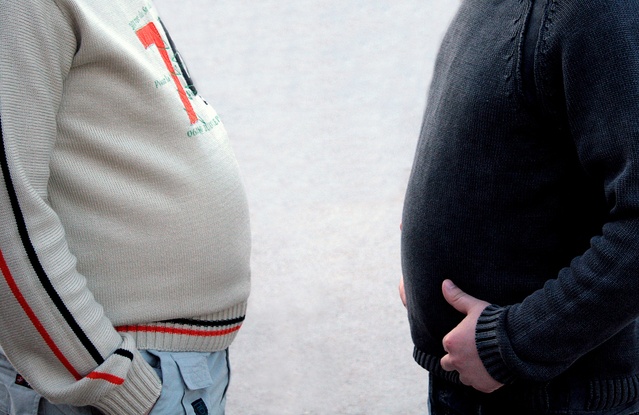When a person loses weight, where, exactly, does the fat go? While that might sound like an elementary question, the results of a new study suggest that the answers given often vary widely, even among those with a doctorate level education. The correct answer is that much of the mass of “lost” fat is exhaled as carbon dioxide.
According to the results of the study conducted in Australia, many health professionals did not correctly answer the question of where body fat goes when people lose weight. More than half of the 150 doctors, dietitians and personal trainers surveyed for the study thought the fat was converted to energy or heat, which violates the Law of Conservation of Mass. Some surveyed thought the metabolites of fat were excreted in feces or converted into muscle tissue.
The correct answer is that most of the mass is breathed out as simple CO2 and passes into thin (or is that ‘fat’?) air.
The authors of the study show that losing 10 kilograms of fat requires 29 kilograms of oxygen to be inhaled. This metabolic process yields 28 kilograms of carbon dioxide and 11 kilograms of water.
Much like investigative reporters, the researchers followed the trail in the metabolic process. Using the example of 10 kilograms of fat as they are ‘lost’, 8.4 kilograms are exhaled as carbon dioxide through the lungs. The 1.6 kilograms that remain become water, the authors stated, which can exit the body in urine, feces, sweat, breath, tears and other bodily fluids. Their calculation, however, ignores fat that can be excreted as ketone bodies under certain physiological conditions or minor amounts of lean mass, whose nitrogen content can be excreted as urea.
So does this find mean that it’s possible to simply breathe yourself thin? In short, no. Breathing more than is necessary for a person’s metabolic rate leads to hyperventilation, which can in turn cause dizziness and loss of consciousness – obviously a counterproductive strategy.
“Losing weight requires unlocking the carbon stored in fat cells,” wrote the authors, “thus reinforcing that often heard refrain of ‘eat less, move more.’”
In their conclusions, the authors recommend that these concepts be included in school curricula and biochemistry courses to rectify what they term widespread misconceptions about weight loss among both the general public people and health professionals.
Reference:
- Meerman, Ruben, and Andrew J. Brown. “When somebody loses weight, where does the fat go?” BMJ 349 (2014): g7257.






